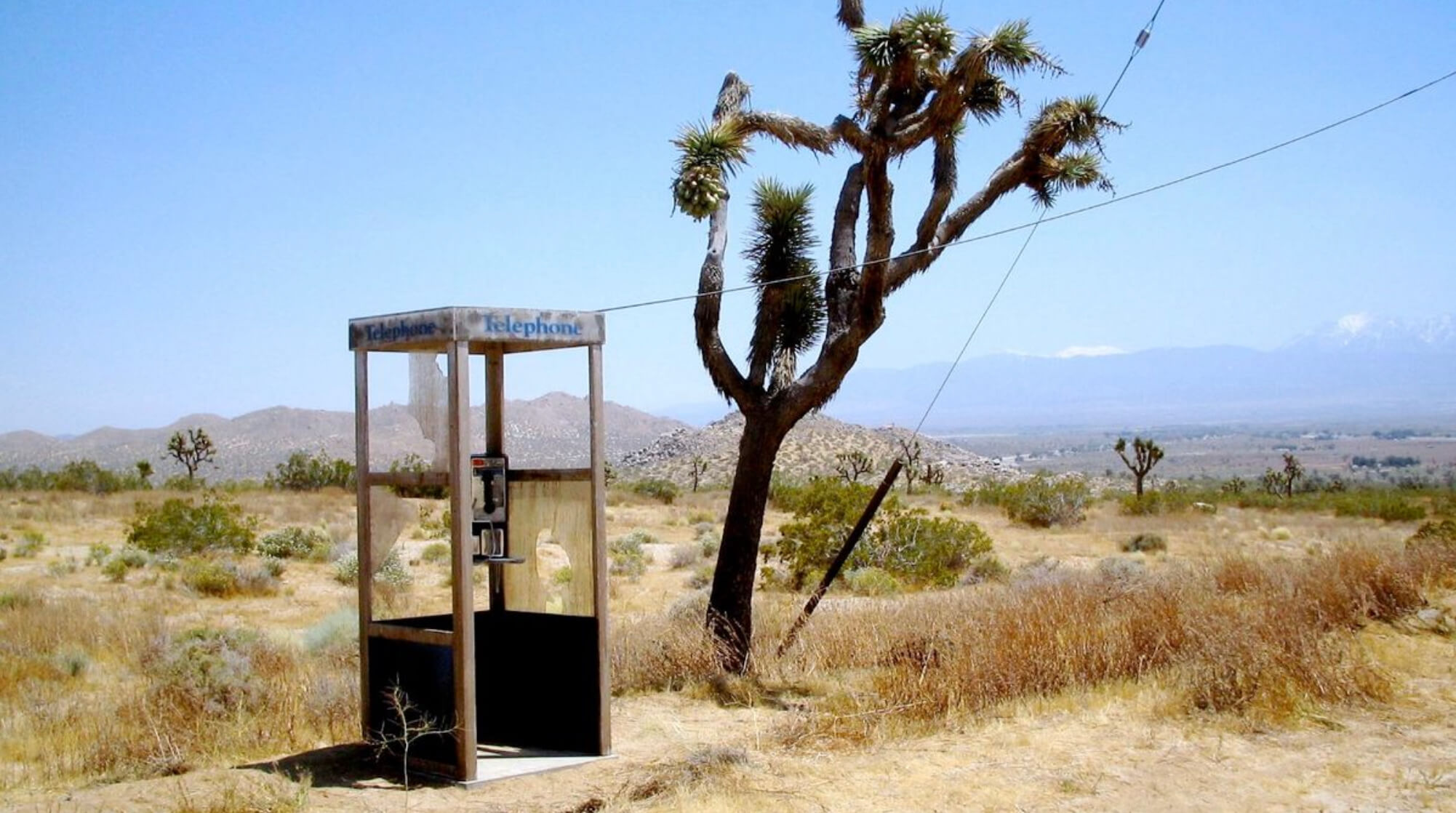In May 1997, Arizona resident Godfrey “Doc” Daniels was reading a zine when he stumbled across a peculiar letter to the editor. A fellow known only as “Mr. N” had spotted a dot labeled “telephone” on a map of the Mojave, fifteen miles from the nearest paved road. Intensely curious, Mr. N drove all the way out there, found the booth alongside a dirt path, and wrote down its number—760-733-9969. Now burning with the same curiosity that had fueled this mysterious writer, Doc called the number several times a day over the course of a month, hoping to contact whoever might be on the other end. He even placed a sticky note on his bathroom mirror that asked him, “Have you called the Mojave Desert today?” Doc had begun to lose hope when one day, to his surprise, someone picked up—a cinder miner named Lorene. The two made small talk for several minutes, but, in his excitement, Doc forgot to ask her exactly where the phone booth was located. Fortunately for us, he tracked it down with a friend, drove out to it amid a fierce lightning storm, and made calls to his friends.
Then those friends began making calls to each other from the Mojave phone booth, thrilled by the strange novelty of it all. However, Doc was not content to keep this secret confined to such a small social circle. He soon created a website that listed the booth’s number, and suddenly people began making pilgrimages to this mechanical oasis. Some of them called their own friends, but others simply wished to discover strangers across the globe.
One man camped out among the Joshua trees for a month and answered five hundred phone calls. Another old man simply wanted to tell stories from his trucking days. Many of these voyagers even mailed Doc news clippings about a lone structure out in the desert that had become a worldwide sensation.
Unfortunately, this early viral Internet phenomenon was too good to last. Concerned about the dramatic increase in foot traffic and possible disturbances to wildlife, Pacific Bell and the National Park Service discussed tearing it down. In May of 2000, during one of the last phone calls that the booth received, Lorene’s brother chatted with a man in England before going off to work in the cinder mine. When he left his sister’s house the next day, the booth had been razed to the ground.
“It was just attracting too much unwanted attention in terms of litter and detritus, and mementos, and things that were being left onsite,” explained Dave Nichols, park archeologist for Mojave National Preserve. “I think that’s ultimately why Bell was convinced to remove it (the phone booth).”
For a while, people still journeyed out to the concrete slab, proving just how powerful an idea the phone booth had become. One man even constructed a tombstone for the booth, to mourn its untimely passing. However, the Park Service eventually removed the slab too, and consistently thwarted attempts to add a commemorative plaque.
“Public lands are not there to allow individuals to put whatever they want out there,” added Nichols. “But I understand the sentiment, of course.”
Still, despite the physical absence of the Mojave Phone Booth, its legend would not die. Several filmmakers paid tribute to it, including in a 2006 feature starring Steve Guttenberg, Annabeth Gish, and Missy Pyle, appropriately called Mojave Phone Booth. Yet the rings had stopped ... until now. On July 31, 2019, a benevolent hacker named Jered Morgan (a.k.a. Lucky225) acquired the original number and set up a system where people can dial it and enter a conference call. You might be fortunate enough to find a stranger on the other end of the line, or you might find yourself talking into the void ... except this time, not even the coyotes are listening.
